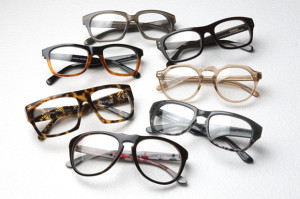Here’s what went down at the AOA 2016 Volunteer Meeting
The American Optometric Association (AOA) recently met for their 2016 volunteer meeting and some big issues were discussed. On February 5th and 6th, over 180 volunteers met in St. Louis, Missouri and exchanged ideas. Programs and resources were discussed, as well as the AOA benefits that members receive. Opened by AOA Resident Steven A. Loomis, O.D., the meeting involved a good deal of updates on important highlights and discussions about how to move forward. This meeting was of great importance because what is discussed at this meeting each year has a large effect on how optometry advances in the future.
Loomis opened the meeting by updating volunteers of the priorities and achievement of the AOA, like the tremendously successful Think about Your Eyes public awareness campaign. the Campaign has been increasing awareness of optometry since July 2013. In addition to this campaign, the AOA has created a new membership initiative in two pilot states. Loomis also spoke about the entreaty created to advocate for continued support of the AOA-Political Action Committee (AOA-PAC). This committee dedicates itself to making sure that optometry’s voice is heard and that the volunteers’ hard work is recognized.
Here are some of the most important takeaways from the AOA volunteer meeting that will affect the future of optometry:
1) The deadline for AOA MORE is approaching
Any doctors who enroll in AOA MORE (Measures and Outcomes Registry for Eyecare) show their intent to use AOA MORE as their specialized data registry for the 2016 EHR Incentive Program year. This also implies that they plan to meet the public health objective for specialized registry reporting. But the deadline for this is quickly approaching on February 29, 2016.
2) Advocacy committees are now providing third party legislative updates.
The volunteers have been advocating the Dental and Optometric Care Access Act, the National Health Service Corps Improvement Act and the Veterans’ Affairs optometric residencies amendment. The AOA also discussed the work being done in states that will soon see legislation regarding unilateral pricing policy. There have also been increases in resources, such as vision services available through community health centers. There was also a call to action to get more people to join the AOA Keypersons Network.
3) Paraoptometric Group gives us some updates.
One of the most important contingents to the AOA is the paraoptometrics. There are over 10,000 paraoptometrics enrolled as AOA associate members, so it is important that the AOA works to benefit them as well. At the meeting, emphasis was placed on the Paraoptometric Career Ladder educational tool. The tool was launched in June 2015 and has been downloaded 1,000 times since its launch. This tool allows the paraoptometric staff to acquire job proficiency with regard to six different responsibilities necessary for a paraoptometric career.
4) Clinical resources committees acknowledge accomplishments
The clinical resources committees have come very far this year. The Contact Lens & Cornea Section’s “Join the Fight Campaign”, an initiative that works to expose the illegal sales of contact lenses through 83 online sites and 19 establishments. This initiative was launched by the Contact Lens Watchdog Group. And that wasn’t the only accomplishment. The Sports Vision Section delivered sports-vision kits to 12 schools and colleges.
5) Discussions about Boston’s upcoming meeting
The conference called “Optometry’s Meeting” will take place in Boston from June 29th to July 3rd. This conference will introduce new, cutting edge formats for spreading education. All attendees will be sure to have an unforgettable experience. The Keynote address will be delivered by former NASA astronaut Buzz Aldrin, and Broadway celebrity Laura Osnes will be speaking as well.
It is clear from the happenings of the 2016 AOA volunteers meeting that there are a lot of exciting things in store for the world of optometry. In the future, we can expect even more endeavors in the way of disseminating valuable information about eye health. A lot of action has been taken to improve the field of optometry, and there are even more exciting advancements coming up in the future.



